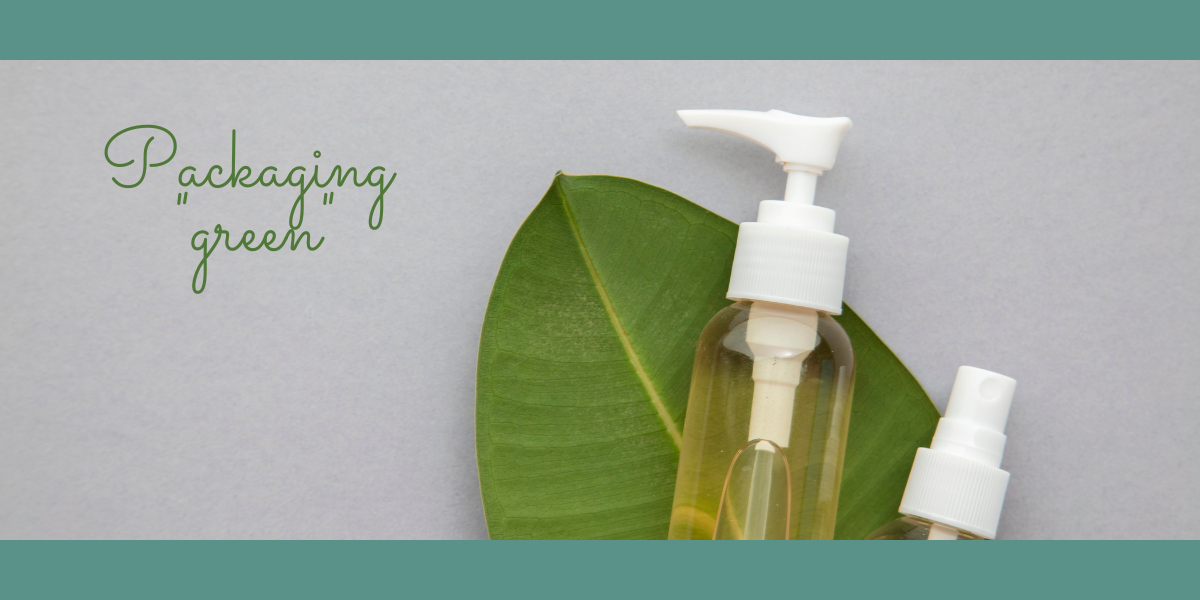05/06/2022
Green packaging and the real environmental impact
Green and eco-sustainable packaging, not a news but a part of the cosmetic product DNA. Considering today the spread of the claim and the risk of abuse and confusion, we try to go deeper into the meaning and aspects to consider in this area.

Speaking of green and environmentally friendly packaging is not a news that we often hear about but a fact that is now a part of the DNA of the cosmetic product, which affects the entire supply chain.
But what does “green packaging” really mean? What does "zero CO2 impact" or "zero circular impact" mean?
Without wishing to report here the entire history and function of the packaging, today one of the most important effects it must have, or rather we could say that it must not have, is the environmental impact.
But again what does "environmental impact" mean?
To understand this, we must consider what the effect of the packaging life cycle actually is on the environment, from production to disposal, in terms of CO2 production - equivalent to energy consumption, waste and related disposal.
CO2 emissions
Regardless of the materials used, to carry out their transformation from raw to refined material it is necessary to use energy, which involves the development of CO2 in the environment. This also happens for the collection of waste, disposal and eventual re-transformation. It is estimated that around 80 million tons of CO2 are emitted annually due to the consumption of packaging, equal to 2% of total greenhouse gas emissions in the EU (https://cordis.europa.eu/)
This cannot be avoided, the CO2 produced can only be reduced but not eliminated: for example by using renewable energy sources, such as solar, wind, water, improving the efficiency of the systems and using semi-finished materials that derive from waste of previous transformations. If the disposal of waste does not involve chemical processes and complex degradations, it is certainly beneficial for the overall energy balance of the product.
The impact on the ecosystem
To be considered so the purely environmental aspect, that is the impact of materials on the ecosystem: as a common sense, a wooden cap integrates better with the environmental system than a polypropylene cap, because it is clearly a material that has been transformed in a way less for its use and therefore more similar to a natural material. We could therefore say that the more a material is still raw, the less transformations it has undergone from its original condition compared to the final one, the more it is similar to the environment and the better it can be integrated into the ecosystem, reducing emissions and the impact of waste disposal.
The concepts of green packaging
Various concepts therefore emerge that identify green, sustainable and environmentally friendly packaging:
the nature of the materials used, their origin, how much they have been chemically transformed
the energy sources used for the transformation
the energy impact required by disposal
the environmental affinity of materials at the end of their life cycle
Let's not forget a hidden but fundamental factor: weight. Less mass, less everything: less CO2, less impact on the ecosystem.
Conclusions
To draw conclusions and add how we at Cosmetitrovo see it: 41% of consumers think that packaging is the first sustainability factor on which the evaluation of a brand is based. This means that packaging becomes the fundamental element to pay attention to in order to evaluate the brand reputation and image return.
Sustainable does not only mean "from wood chip scraps", "recycled and recyclable", "biodegradable", but it embraces a much broader concept where the consumer often does not have the opportunity to carry out objective and comparative assessments.
In our opinion, the sustainability label is the optimal solution to contain an index that indicates CO2 emissions and the general impact on the ecosystem.
In the absence of the latter, today surely choosing products deriving from the circular economy, recycled, recyclable and produced in the European Union (where regulation is stricter than in other countries) is an excellent initial step.


